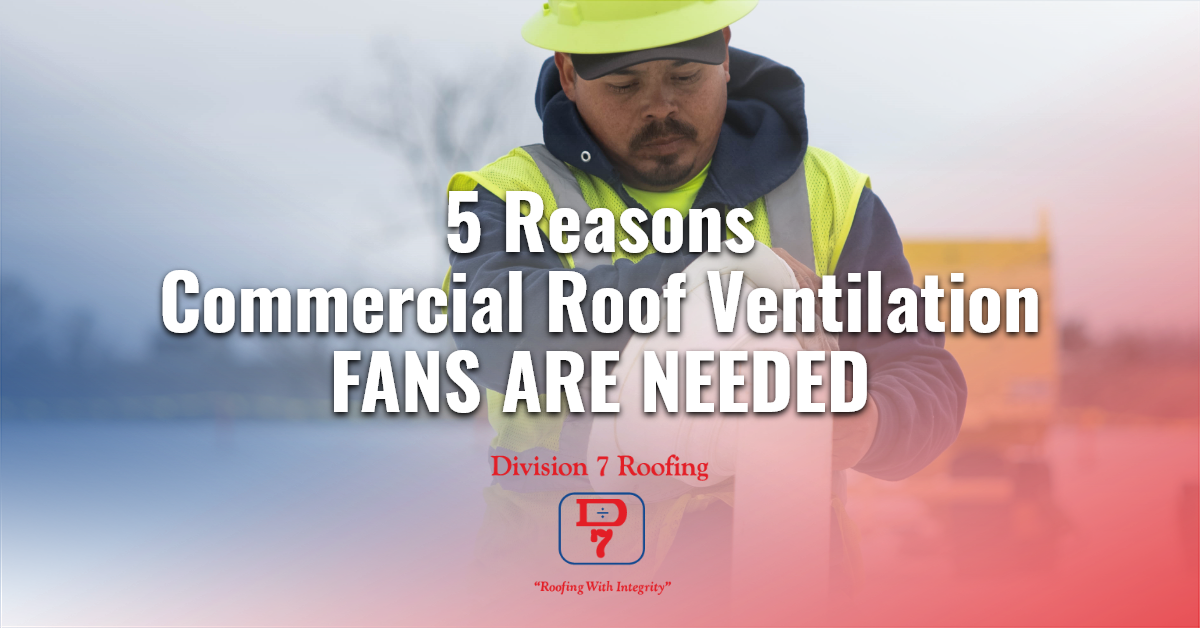You have probably spotted them on neighboring businesses, possibly without realizing it: commercial roof ventilation fans. If your business property lacks rooftop fans — or doesn’t have enough ventilation fans— you are paying a tremendous price in high energy bills. Ventilation fans are integral components of a proper roofing system; below we lay out five reasons your commercial or industrial property needs them!
What Are Commercial Roof Ventilation Fans?
Five general categories of commercial roof ventilation fans are available to owners of industrial and business properties:
- Downblast Roof Ventilators — Where a steady exhaust or supply of air under low-to-high static pressures is needed, as in exhausting clean air.
- Wind-Driven Turbine Ventilators — These ventilation fans can help remove hot roof deck air in summer and moisture-laden air in winter; their turbines rotate as the wind blows to create a strong upward draft that draws inside air up and out.
- Upblast Roof Ventilators — Contaminated air is directed away from the roof, often for commercial kitchens.
- Hooded Exhaust Fans — These purify the air from pollution and excessive heat; they also help eliminate humidity by exhausting moisture, helping to eliminate mold and reduce odors.
- Emergency Smoke Exhaust Ventilators — These specialty ventilation fans remove smoke and heat from a burning building.
Five Reasons
Why should you consider to ensure your property has rooftop ventilation fans? For five great reasons:
- Energy savings — Ventilation fans circulate air throughout your roof deck, helping to keep deck and rooftop temperatures close to air temperature; this helps insulate your treated indoor air and reduces the load on your heating and cooling systems.
- Inhibiting mold growth — Circulating air means constant air movement and lower humidity, so mold never has a chance to set up housekeeping (mold grows when air is still and surfaces are damp).
- Preventing ice dams — In typical Ohio winters, freeze and thaw cycles can bring clogged internal drains and parapet scuppers. Still, circulation fans can keep temperatures steady and discourage formation of ice dams.
- Regulating temperatures — Rooftop ventilation fans will even out temperature spikes within your roof deck, easing any thermal expansion and contraction issues on roofing materials and your building’s structure.
- Extending the lifespan of the roof — A roof that has air circulating above and below it will last far longer than a roof sitting on stifling, unmoving air.
If you maintain a business in Columbus, Ohio, or its surrounding areas, contact Division 7 Roofing today so that we may help you with all your roofing and ventilation needs.


